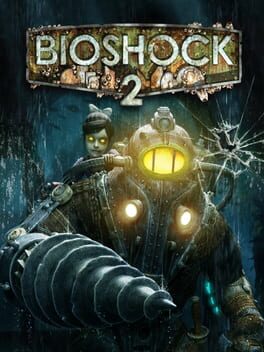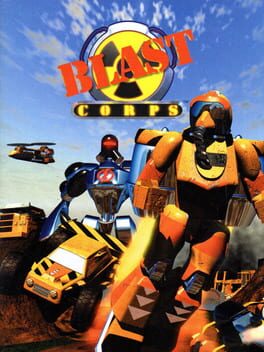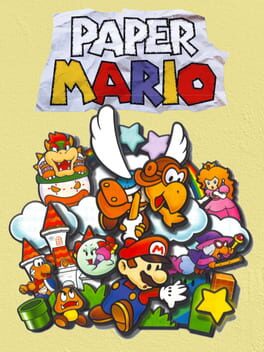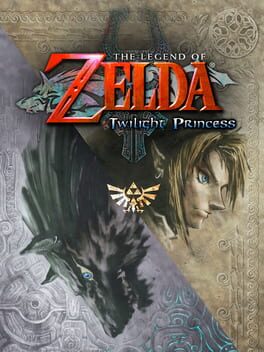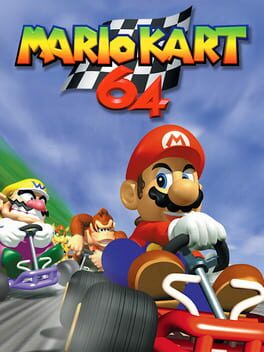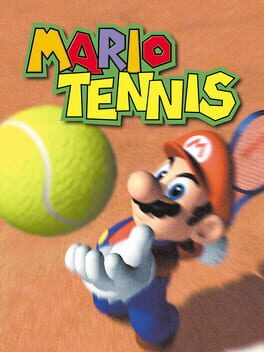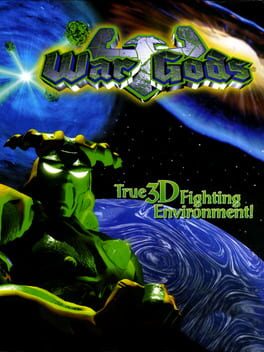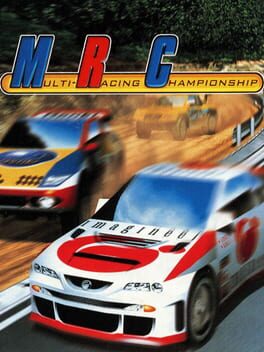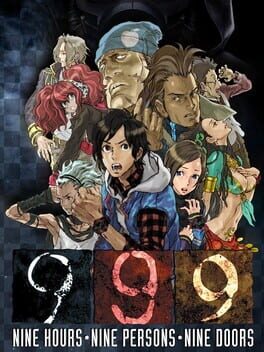SNESmapper
BACKER
2023
A very faithful remake of one of the most beloved SNES RPGs of its time that manages to retain the unique charming feel and experience that we all know and love.
Super Mario RPG for the Switch provides quality-of-life features and slight improvements enough to have a better experience over the original.
Graphically, the game uses improved 3D graphics but doesn't overdo it by keeping simplicity and colorfuness at bay. Performance is not the best with frame drops in certain areas of the game but nothing that deters from a great experience. Soundtrack was updated but you can switch to the original if you prefer. The game structure is basically unchanged with the same Mushroom Kingdom locales and fairly linear progression throughout the game's story. Dialogue between main characters and even regular NPCs is charming and fun, and adds to the world-building experience making this one of my favorite experiences in terms of interacting with the Mushroom Kingdom. Combat remains turn-based and follows the same formula but with certain improvements and additions that make things go faster and overall a more enjoyable time.
If you are familiar with RPGs in general, then this game will be a cakewalk in terms of difficulty. This is a good game to introduce players to the genre. Despite the lack of challenge, I still enjoyed my time with the game except perhaps with the last few sections of the game which are very combat-heavy. Huge thumbs up to Nintendo for reviving this game...odd choice considering it was not the biggest seller back in the day but I won't complain and I'm extremely happy that younger gamers will get to experience this charming RPG in a modern way.
Super Mario RPG for the Switch provides quality-of-life features and slight improvements enough to have a better experience over the original.
Graphically, the game uses improved 3D graphics but doesn't overdo it by keeping simplicity and colorfuness at bay. Performance is not the best with frame drops in certain areas of the game but nothing that deters from a great experience. Soundtrack was updated but you can switch to the original if you prefer. The game structure is basically unchanged with the same Mushroom Kingdom locales and fairly linear progression throughout the game's story. Dialogue between main characters and even regular NPCs is charming and fun, and adds to the world-building experience making this one of my favorite experiences in terms of interacting with the Mushroom Kingdom. Combat remains turn-based and follows the same formula but with certain improvements and additions that make things go faster and overall a more enjoyable time.
If you are familiar with RPGs in general, then this game will be a cakewalk in terms of difficulty. This is a good game to introduce players to the genre. Despite the lack of challenge, I still enjoyed my time with the game except perhaps with the last few sections of the game which are very combat-heavy. Huge thumbs up to Nintendo for reviving this game...odd choice considering it was not the biggest seller back in the day but I won't complain and I'm extremely happy that younger gamers will get to experience this charming RPG in a modern way.
2010
BioShock 2 is a fantastic sequel to the timeless masterpiece that is BioShock. Even though it doesn't offer the "wow" factor that the first game provided in terms of setting, atmosphere, and story; it manages to deliver another memorable experience that takes place once again in Rapture but after 10 years of the events of the first game.
Gameplay wise, there are several improvements including the ability to use weapons and plasmids at the same time, new hacking minigames, and the biggest and obvious change is being able to control subject Delta, one of the first Big Daddy prototypes. There are also new variances of enemies with the Big Sisters being the new main enemy throughout the course of the game. Rapture is even more decayed compared to the game which is expected considering the time of the events.
Story-wise, this game doesn't deliver on the same level as the first one but it does have plenty of audiobooks and references that provide more life to Rapture and the BioShock universe. Dr. Lamb (the new antagonist) brings a new ideological view and relies on her clinical psychiatrist background to create a cult following that wrecked havoc across Rapture.
All in all, BioShock 2 is a great follow-up to the first game and the perfect excuse to visit Rapture once again.
Gameplay wise, there are several improvements including the ability to use weapons and plasmids at the same time, new hacking minigames, and the biggest and obvious change is being able to control subject Delta, one of the first Big Daddy prototypes. There are also new variances of enemies with the Big Sisters being the new main enemy throughout the course of the game. Rapture is even more decayed compared to the game which is expected considering the time of the events.
Story-wise, this game doesn't deliver on the same level as the first one but it does have plenty of audiobooks and references that provide more life to Rapture and the BioShock universe. Dr. Lamb (the new antagonist) brings a new ideological view and relies on her clinical psychiatrist background to create a cult following that wrecked havoc across Rapture.
All in all, BioShock 2 is a great follow-up to the first game and the perfect excuse to visit Rapture once again.
1997
Blast Corps gets a huge thumbs-up because of its uniqueness in concept and variety in gameplay. All you do in this game is clear a path so a nuclear missile doesn't blow up. You clear the path by using unique vehicles and other blast equipment like robots.
Graphics were very good for the time and there was a good level of detail featuring buildings, cars, and different terrain surfaces. Explosion effects were very good for the time. The soundtrack and sound effects were silly but very appropriate with the nature of the game.
Gameplay was different and provided a ton of variety due to the different types of vehicles you could use on different levels. Not everything was perfect though, as there were a couple of vehicles that turned the game into a pain with the obvious example being the dump truck that required perfect slides to destroy obstacles. Those looking for a challenge also had the option to improve scoring and get different types of medals for each level.
Due to its difficulty, I was never able to finish the game (dump truck I'm looking at you) but nevertheless Blast Corps was a very fun game to experience due to how different it was at the time, and in fact, it still remains as a very unique game worth trying via modern resources such as the Rare Replay collection.
Graphics were very good for the time and there was a good level of detail featuring buildings, cars, and different terrain surfaces. Explosion effects were very good for the time. The soundtrack and sound effects were silly but very appropriate with the nature of the game.
Gameplay was different and provided a ton of variety due to the different types of vehicles you could use on different levels. Not everything was perfect though, as there were a couple of vehicles that turned the game into a pain with the obvious example being the dump truck that required perfect slides to destroy obstacles. Those looking for a challenge also had the option to improve scoring and get different types of medals for each level.
Due to its difficulty, I was never able to finish the game (dump truck I'm looking at you) but nevertheless Blast Corps was a very fun game to experience due to how different it was at the time, and in fact, it still remains as a very unique game worth trying via modern resources such as the Rare Replay collection.
2000
In a time where RPGs were hard to come by as a Nintendo 64 owner, Paper Mario came in and impressed everyone with its unique art direction portraying a pop-up storybook look, wonderful soundtrack, and unique gameplay featuring turn-based combat with specific quick time commands for attacks and defense.
This RPG does a good job in maintaining a charming look and feel throughout the game thanks to its art direction, characters, dialogue / writing, and the different types of locales. This game also plays a key rolein paving the way for the highly acclaimed Paper Mario: The Thousand Year Door for the Nintendo GameCube, among other entries in the Paper Mario series and Mario RPG types of games such as the Mario & Luigi series.
This RPG does a good job in maintaining a charming look and feel throughout the game thanks to its art direction, characters, dialogue / writing, and the different types of locales. This game also plays a key rolein paving the way for the highly acclaimed Paper Mario: The Thousand Year Door for the Nintendo GameCube, among other entries in the Paper Mario series and Mario RPG types of games such as the Mario & Luigi series.
2009
MadWorld came out in a day and age where, for whatever strange reason, the gaming world yearned for mature violent games on Nintendo consoles to bring balance to its ecosystem after decades of family-friendly games and lack of third-party support for 'adult' games. As silly as that sounds, I'm kind of glad things turned out the way they did because Sega and Platinum games delivered one of the most unique over-the-top gory, violent, and fun games of its generation in MadWorld.
Its presentation is great featuring black and white characters and backgrounds with the exception of blood and perhaps some in-game text here in there. This almost 'monochromatic' presentation makes the gore stands out more than your average game with the red blood providing a good contrast. The gore and violence are magnified by the use of over the top combat and execution moves that make use of different character abilities and the environment to finish off the enemies in an ample variety of violent and grotesque ways. This experience is also, to an extent, enhanced by the motion controls of the wiimote which work great for the most part but do have some shortcomings as they do with other games.
The story of the game is surprisingly entertaining and it has some interesting developments towards the end of the game, something I was not expecting. Soundtrack is good, providing some hip-hop type of tunes.
The game itself is fairly short and this was one of the main criticisms when the game came out but I can't complain too much since most beat em ups and brawlers that I have historically played have been shorter games since they were arcadey in their nature (Final Fight, Cadillac & Dinosaurs, etc). With that being said, the game does provide the ability to go for higher scores, extending its gameplay time and replay value.
Its presentation is great featuring black and white characters and backgrounds with the exception of blood and perhaps some in-game text here in there. This almost 'monochromatic' presentation makes the gore stands out more than your average game with the red blood providing a good contrast. The gore and violence are magnified by the use of over the top combat and execution moves that make use of different character abilities and the environment to finish off the enemies in an ample variety of violent and grotesque ways. This experience is also, to an extent, enhanced by the motion controls of the wiimote which work great for the most part but do have some shortcomings as they do with other games.
The story of the game is surprisingly entertaining and it has some interesting developments towards the end of the game, something I was not expecting. Soundtrack is good, providing some hip-hop type of tunes.
The game itself is fairly short and this was one of the main criticisms when the game came out but I can't complain too much since most beat em ups and brawlers that I have historically played have been shorter games since they were arcadey in their nature (Final Fight, Cadillac & Dinosaurs, etc). With that being said, the game does provide the ability to go for higher scores, extending its gameplay time and replay value.
It's hard to talk and summarize the experience of The Legend of Zelda: Ocarina of Time (OOT) without restating the perennial praises and influences already discussed and passed down by gamers since the game released in 1998. For one, it still holds the #1 ranking as the best-reviewed video game of all time, decades after its release. It also happens to be my favorite game of all time. My choice has never been influenced by the historical hype that this game has carried over generations: it's simply based on personal experience. For those of us who had the privilege to experience this game upon release in 1998 it's easy to see why this game was the best, why it remains the best, and why it will likely remain as one of the best and most influential games of all time.
Starting with the obvious, this game pushed the boundaries on just about every category at the time of its release. Graphically, it was the first 3D Zelda game and the first time we had a chance to explore and experience the confines of Hyrule all while witnessing dynamic weather and time-of-day effects. From a soundtrack perspective, the game features an unsurprisingly number of epic tunes featuring Gerudo Valley, an updated version of Kakariko's Village theme, Intro song, among other timeless masterpieces. Gameplay-wise, there were a number of very important and influential features introduced by Nintendo including quick button mapping for items in a console game, Z-targeting system, advanced use of the Rumble Pak, etc. The game's progression was entertaining paired with the intriguing story and the time traveling featuring the switching of young and adult Link. I feel like this was the first Zelda game that also featured a more involved story and characters versus previous games and perhaps started the trend of fans over-analyzing the lore of the series and different timelines that were later made official by Nintendo making OOT a pivotal game and creating a break/diverging path in the timeline depending on the "fate" of Link.
As time passes, it's becoming more of a challenge to keep OOT's legacy alive since modern games have, are, and will improve on just about every facet. However, for those of us who experienced this game "back in the day", we can keep the legacy alive with our reviews, thoughts, and sharing our experience with younger gamers for as long as we are able to. Cheers for the memories.
Starting with the obvious, this game pushed the boundaries on just about every category at the time of its release. Graphically, it was the first 3D Zelda game and the first time we had a chance to explore and experience the confines of Hyrule all while witnessing dynamic weather and time-of-day effects. From a soundtrack perspective, the game features an unsurprisingly number of epic tunes featuring Gerudo Valley, an updated version of Kakariko's Village theme, Intro song, among other timeless masterpieces. Gameplay-wise, there were a number of very important and influential features introduced by Nintendo including quick button mapping for items in a console game, Z-targeting system, advanced use of the Rumble Pak, etc. The game's progression was entertaining paired with the intriguing story and the time traveling featuring the switching of young and adult Link. I feel like this was the first Zelda game that also featured a more involved story and characters versus previous games and perhaps started the trend of fans over-analyzing the lore of the series and different timelines that were later made official by Nintendo making OOT a pivotal game and creating a break/diverging path in the timeline depending on the "fate" of Link.
As time passes, it's becoming more of a challenge to keep OOT's legacy alive since modern games have, are, and will improve on just about every facet. However, for those of us who experienced this game "back in the day", we can keep the legacy alive with our reviews, thoughts, and sharing our experience with younger gamers for as long as we are able to. Cheers for the memories.
Wonder is easily in my eyes the best side-scrolling Mario platforming game since Super Mario Word. What really stands out about this game is the level design variety in terms of backgrounds and overall platforming themes. Even though the "Worlds" have certain themes to them (such as snow, sand, lava, etc) the levels themselves play very different, offering a great amount of varierty.
In addition to the natural variety that each level has, the addition of the Wonder Flower powerup increases variety and innovation even more. The Wonder Flower changes mechanics, visuals, physics and transforms the players to unique characters in certain levels. But there's more: Wonder introduces new powerups in the form of elephant Mario, bubble flower and drill head costume. Each of these new powerups add another layer of strategy for the levels. Collectibles are scattered in the form of wonder flower purple coins.
Controls are incredibly tight and physics extremely well-tuned, making platforming in this game very fair. It must be said though that the difficulty in this game is on the "very low" side making this one of the easiest Mario platforming games.
Lastly, the overall presentation in the game is fantastic. Colors are vibrant and animations are next-level for a Mario game. Somehow Nintendo has managed to bring yet another timeless Mario side-scrolling game so this is a must-have if you own a Nintendo Switch.
In addition to the natural variety that each level has, the addition of the Wonder Flower powerup increases variety and innovation even more. The Wonder Flower changes mechanics, visuals, physics and transforms the players to unique characters in certain levels. But there's more: Wonder introduces new powerups in the form of elephant Mario, bubble flower and drill head costume. Each of these new powerups add another layer of strategy for the levels. Collectibles are scattered in the form of wonder flower purple coins.
Controls are incredibly tight and physics extremely well-tuned, making platforming in this game very fair. It must be said though that the difficulty in this game is on the "very low" side making this one of the easiest Mario platforming games.
Lastly, the overall presentation in the game is fantastic. Colors are vibrant and animations are next-level for a Mario game. Somehow Nintendo has managed to bring yet another timeless Mario side-scrolling game so this is a must-have if you own a Nintendo Switch.
1996
One of the most important console games of all time. The legacy of Super Mario 64 is based on the monumental transition of console games from 2D to 3D and, while SM64 was not the first 3D console game ever, it was the first one that was crafted to perfection with the tools and limitations available at the time of its development and release.
This game dropped jaws from its very first playable section outside the castle, which acted as a playground for the player to explore all the new moves that Mario could perform ranging from regular jumps, to acrobatic jumps, crouching, punching, backflips, etc. The physics behind Mario movements was ahead of its time to the point that this game remains a fan favorite for speed runs and it never ceases to amaze me how speedrunners combine all the different moves for a seamless ninja-like progression through the different levels.
Graphics were of course top notch at the time of release with the N64 hardware making use of cleaner and less pixelated textures versus other PlayStation and Sega Saturn games. Soundtrack was also fantastic with tunes that have become timeless and are part of Nintendo's legacy to the industry. Other milestones include Charles Martinet debuting as the voice of Mario and the game featuring limited voice acting (Princess Peach).
The overall game design was excellent with the castle acting as the main hub for levels but at the same time offering its own secrets and areas that were fun to explore. The thematic behind using the castle's paintings as levels/worlds allowed for the design team at EAD to have full freedom in terms of themes for each level which increased variety and replay value (snow, desert, haunted, underwater levels, etc). Furthermore, to increase replay value and varierty, each level features different "missions" to obtain stars which forced full exploration of said levels on behalf of the player. Simply put, if you wanted all 120 stars in this game, you would have to revisit and master each corner of all levels, creating a unique feeling of adventure and feeling of mastering the game.
Better graphics, presentation, and gameplay components have been crafted throughout the years in the 3D platforming world ever since the release of SM64; but the legacy this game left is unmatched and the level of polish and quality that Nintendo provided ended up creating a timeless masterpiece in the gaming universe.
This game dropped jaws from its very first playable section outside the castle, which acted as a playground for the player to explore all the new moves that Mario could perform ranging from regular jumps, to acrobatic jumps, crouching, punching, backflips, etc. The physics behind Mario movements was ahead of its time to the point that this game remains a fan favorite for speed runs and it never ceases to amaze me how speedrunners combine all the different moves for a seamless ninja-like progression through the different levels.
Graphics were of course top notch at the time of release with the N64 hardware making use of cleaner and less pixelated textures versus other PlayStation and Sega Saturn games. Soundtrack was also fantastic with tunes that have become timeless and are part of Nintendo's legacy to the industry. Other milestones include Charles Martinet debuting as the voice of Mario and the game featuring limited voice acting (Princess Peach).
The overall game design was excellent with the castle acting as the main hub for levels but at the same time offering its own secrets and areas that were fun to explore. The thematic behind using the castle's paintings as levels/worlds allowed for the design team at EAD to have full freedom in terms of themes for each level which increased variety and replay value (snow, desert, haunted, underwater levels, etc). Furthermore, to increase replay value and varierty, each level features different "missions" to obtain stars which forced full exploration of said levels on behalf of the player. Simply put, if you wanted all 120 stars in this game, you would have to revisit and master each corner of all levels, creating a unique feeling of adventure and feeling of mastering the game.
Better graphics, presentation, and gameplay components have been crafted throughout the years in the 3D platforming world ever since the release of SM64; but the legacy this game left is unmatched and the level of polish and quality that Nintendo provided ended up creating a timeless masterpiece in the gaming universe.
2016
Forget about all the drama and complaints from this game being delayed for so long, this is in my opinion a modern masterpiece that beautifully portrays and builds a bond between a child and a creature (Trico). The setting of the game is mysterious and incredible to look at and experience, as well as being right in line with the previous Team Ico games.
Level design is great and I have to take my hat off to the devs and Fumito Ueda for adapting levels to accommodate both your character (boy) and Trico which are disproportionately different in size and behavior. The same applies with the general progression and puzzles found in the game which involves both characters. The general exploration has a vertical component to it and is handled very well through dramatic camera angles. If there's one criticism that I have is the occasional botched controls and interaction with Trico which can be bothersome, as well as some odd camera angles encountered every now and then.
With that being said, the overall journey is well worth experiencing; I was really impressed, pleased and moved by the overall story and ending in this game. A must-play if you are a PlayStation fan.
Level design is great and I have to take my hat off to the devs and Fumito Ueda for adapting levels to accommodate both your character (boy) and Trico which are disproportionately different in size and behavior. The same applies with the general progression and puzzles found in the game which involves both characters. The general exploration has a vertical component to it and is handled very well through dramatic camera angles. If there's one criticism that I have is the occasional botched controls and interaction with Trico which can be bothersome, as well as some odd camera angles encountered every now and then.
With that being said, the overall journey is well worth experiencing; I was really impressed, pleased and moved by the overall story and ending in this game. A must-play if you are a PlayStation fan.
This game is the main reason I stood in line for hours to get a Wii on launch date. I was incredibly disappointed when the Wii was revealed and learned that it was going to be a slightly more powerful Gamecube with unconventional controls. However, when I watched the intro trailer from Nintendo on YouTube (ah yes, the early YouTube days) my hype went through the roof and decided that it was (hopefully) worth the purchase the Wii on day one for this game.
And so, my journey in Twilight Princess started on November 19 of 2006. While this is not my favorite Zelda 3D game, it's close to thanks to the excellent dungeon design (perhaps still the best in the series?) and fun items that were introduced in this game. The wolf sections and tear collecting did get tiresome at times but I didn't hate them as some did. Without spoiling anything, Midna went from a hated character to a liked character organically as the game progressed.
Graphics were great (for the time) and I enjoyed the more 'mature' art direction they went for this game. Controls were decent and wiimote waggling was not terrible but definitely not needed.
All in all, Zelda TP is one of my favorite 3D Zelda games and worth checking out to experience the excellent dungeon design.
And so, my journey in Twilight Princess started on November 19 of 2006. While this is not my favorite Zelda 3D game, it's close to thanks to the excellent dungeon design (perhaps still the best in the series?) and fun items that were introduced in this game. The wolf sections and tear collecting did get tiresome at times but I didn't hate them as some did. Without spoiling anything, Midna went from a hated character to a liked character organically as the game progressed.
Graphics were great (for the time) and I enjoyed the more 'mature' art direction they went for this game. Controls were decent and wiimote waggling was not terrible but definitely not needed.
All in all, Zelda TP is one of my favorite 3D Zelda games and worth checking out to experience the excellent dungeon design.
1996
Mario Kart 64 was a big improvement in many ways over the original, especially in the graphics, presentation, and sound departments.
I always thought that the gameplay was not the best and found the drifting/sliding as well as the physics a bit off and never felt like they clicked properly with the game.
Track design and overall content is among my favorite in the series, with newly created 3D tracks featuring interesting shortcuts ranging from simple to complicated ones. Royal Raceway (featuring Peach's Castle) was an incredible track to experience at the time shortly after the release of Super Mario 64. Toad's Turnpike was another favorite of mine with the modern feel and addition of traffic obstacles. Battle mode was fun and properly done for the Nintendo 64.
I always thought that the gameplay was not the best and found the drifting/sliding as well as the physics a bit off and never felt like they clicked properly with the game.
Track design and overall content is among my favorite in the series, with newly created 3D tracks featuring interesting shortcuts ranging from simple to complicated ones. Royal Raceway (featuring Peach's Castle) was an incredible track to experience at the time shortly after the release of Super Mario 64. Toad's Turnpike was another favorite of mine with the modern feel and addition of traffic obstacles. Battle mode was fun and properly done for the Nintendo 64.
2000
Very solid tennis game for being the first in the series. Easy to pick up and play but somewhat challenge to master with all the different shot types and tricks. Subsequent games have made several improvements but this game laid the foundation for the series very well with its arcade-y gameplay perfectly suited for a Mario sports title. CPU opponents can be frustratingly hard on the major tournaments and it will require the player to explore the roster to find the best suited character to complete the game (typically powershot characters).
1995
Terrible fighting game trying to be yet another Mortal Kombat clone with its own unique spin featuring different demigods.
Most of the characters were forgettable, the only one I liked was Anubis but even then, the gameplay made this game almost unplayable with slow and stiff movements. The promise of 3D mechanics was a scam, with the game only featuring a step move that checked the box for "3D" movement.
Most of the characters were forgettable, the only one I liked was Anubis but even then, the gameplay made this game almost unplayable with slow and stiff movements. The promise of 3D mechanics was a scam, with the game only featuring a step move that checked the box for "3D" movement.
For being an early title for the Nintendo 64, MRC provided a solid racing experience following the Ridge Racer formula with a few ingredients of its own.
Graphics and presentation were very good as well as gameplay and basic physics. The game also featured small details that made it stand a bit over regular racing games such as dynamic dash gauge among other details. Tracks had solid designs with multiple paths / shortcuts that provided advantages depending on the type of vehicle you selected (i.e. off-road)
Perhaps the weakest point in this game is the relative lack of content / small number of tracks. The game does try to re-use them in certain ways such as mirrored tracks but the lack of content is apparent no matter what.
Graphics and presentation were very good as well as gameplay and basic physics. The game also featured small details that made it stand a bit over regular racing games such as dynamic dash gauge among other details. Tracks had solid designs with multiple paths / shortcuts that provided advantages depending on the type of vehicle you selected (i.e. off-road)
Perhaps the weakest point in this game is the relative lack of content / small number of tracks. The game does try to re-use them in certain ways such as mirrored tracks but the lack of content is apparent no matter what.
One of my favorite narrative-driven games of all time, 999 sets you in one of the most unique and bizarre "games" that have dire consequences if the wrong decisions/paths are taken. Gameplay consists of investigation and puzzle solving ranging from decent to very good.
The story and characters are top notch and going through the true ending route take the story to a whole new level.
The story and characters are top notch and going through the true ending route take the story to a whole new level.

